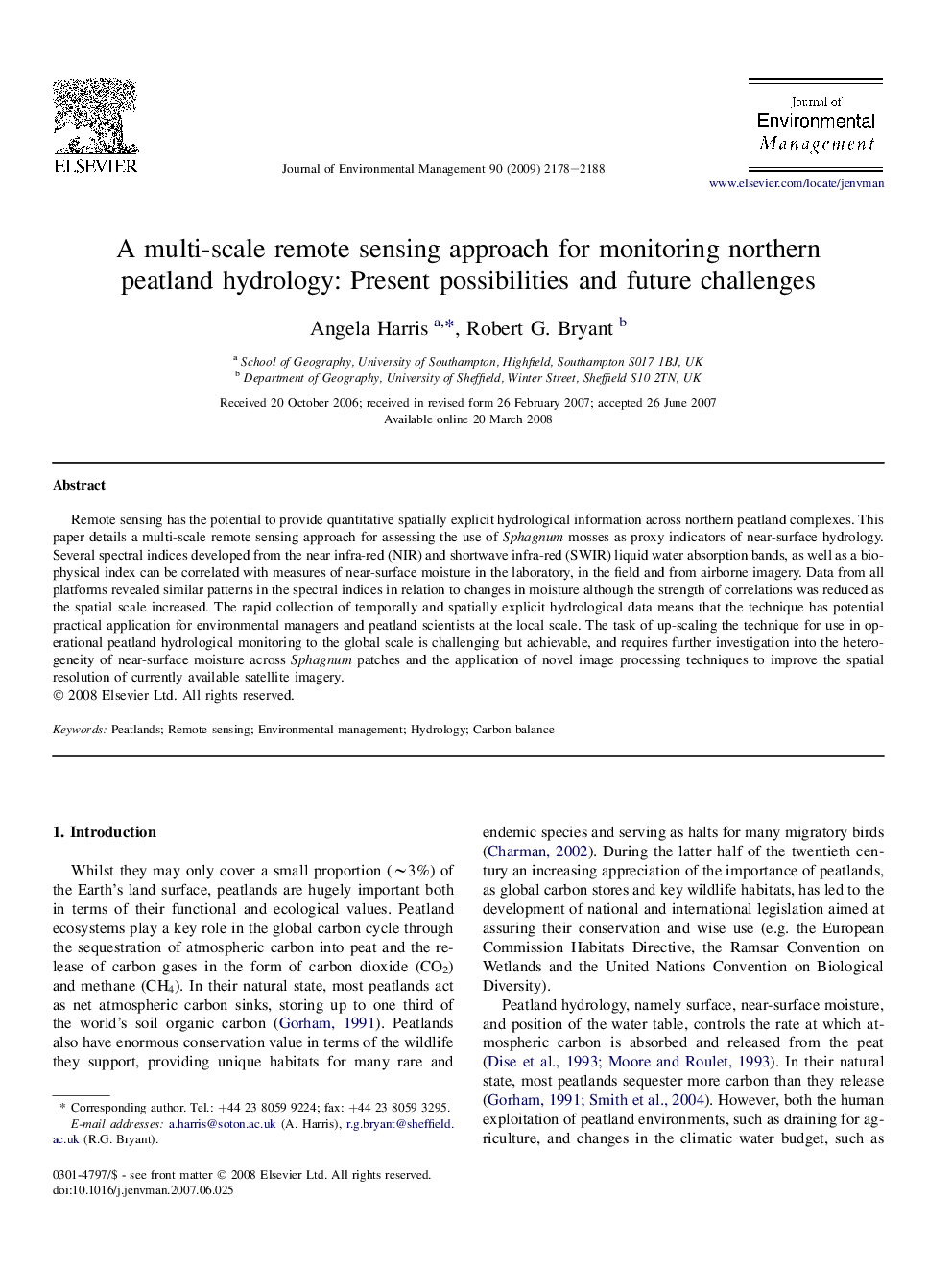| Article ID | Journal | Published Year | Pages | File Type |
|---|---|---|---|---|
| 1058180 | Journal of Environmental Management | 2009 | 11 Pages |
Remote sensing has the potential to provide quantitative spatially explicit hydrological information across northern peatland complexes. This paper details a multi-scale remote sensing approach for assessing the use of Sphagnum mosses as proxy indicators of near-surface hydrology. Several spectral indices developed from the near infra-red (NIR) and shortwave infra-red (SWIR) liquid water absorption bands, as well as a biophysical index can be correlated with measures of near-surface moisture in the laboratory, in the field and from airborne imagery. Data from all platforms revealed similar patterns in the spectral indices in relation to changes in moisture although the strength of correlations was reduced as the spatial scale increased. The rapid collection of temporally and spatially explicit hydrological data means that the technique has potential practical application for environmental managers and peatland scientists at the local scale. The task of up-scaling the technique for use in operational peatland hydrological monitoring to the global scale is challenging but achievable, and requires further investigation into the heterogeneity of near-surface moisture across Sphagnum patches and the application of novel image processing techniques to improve the spatial resolution of currently available satellite imagery.
